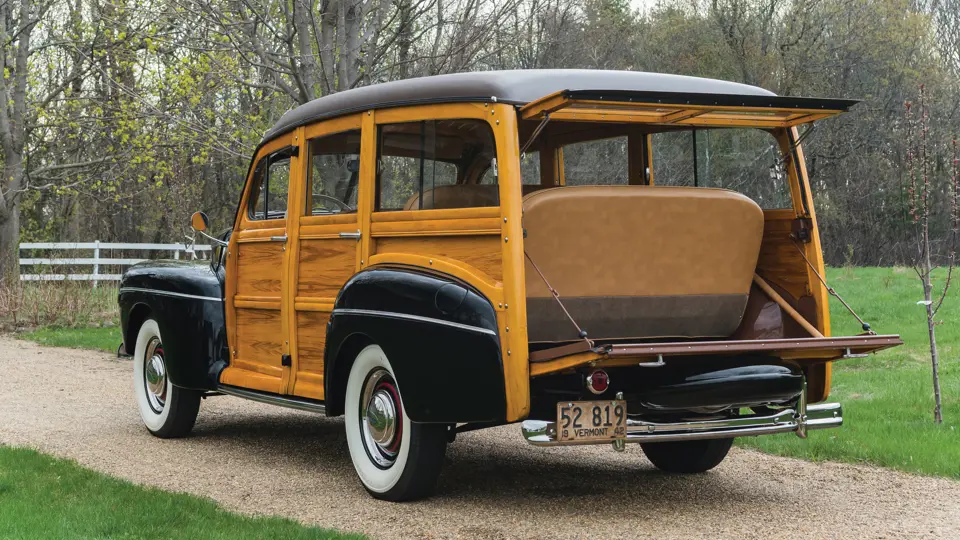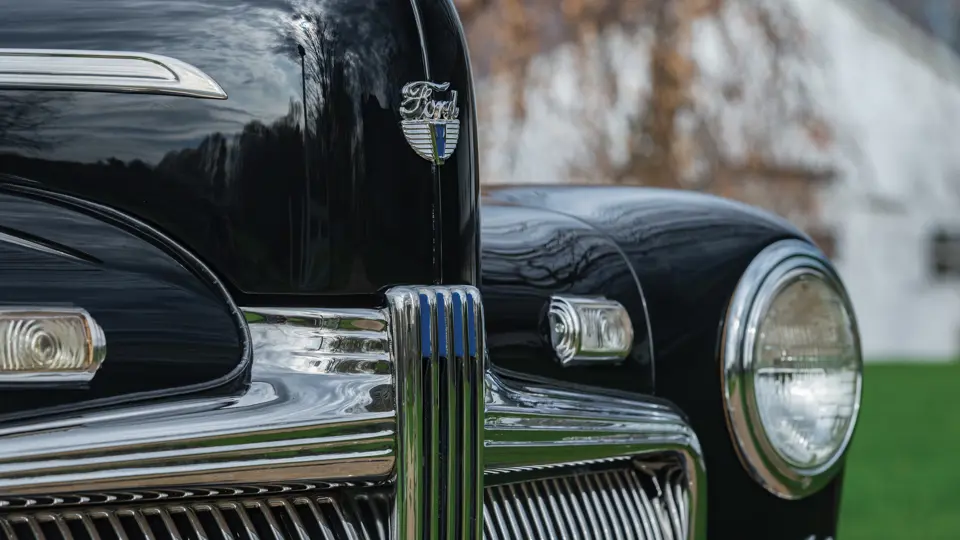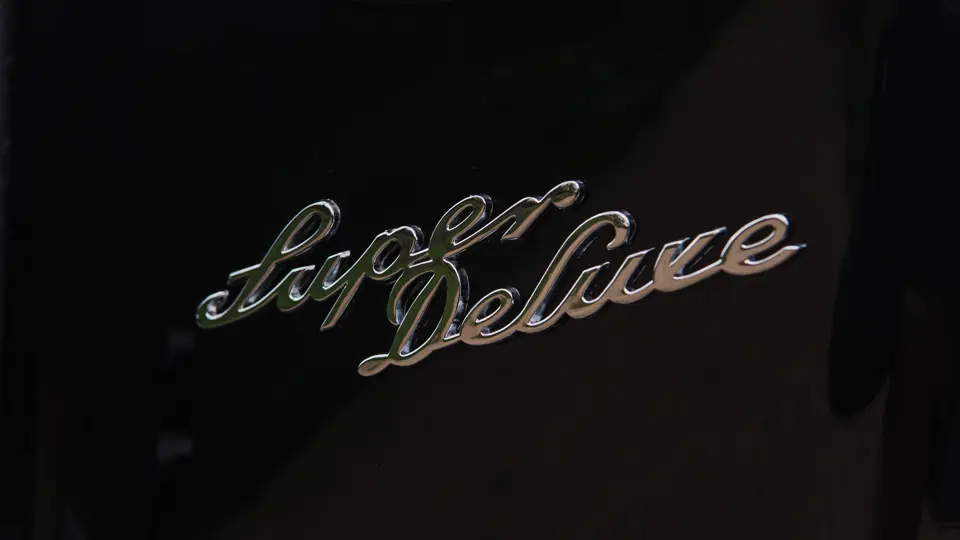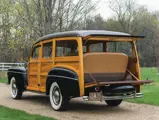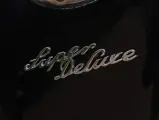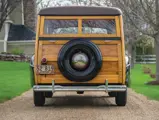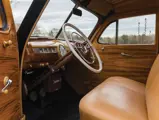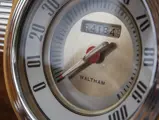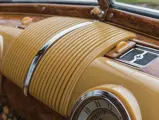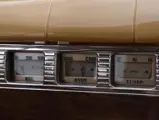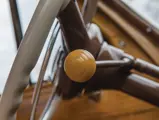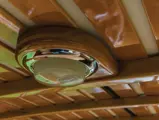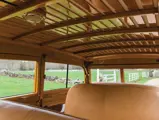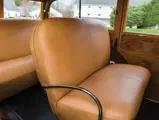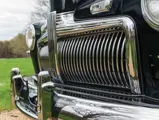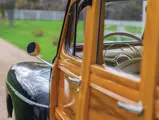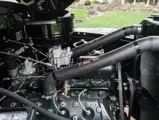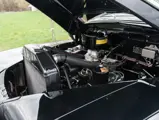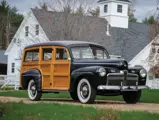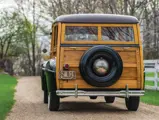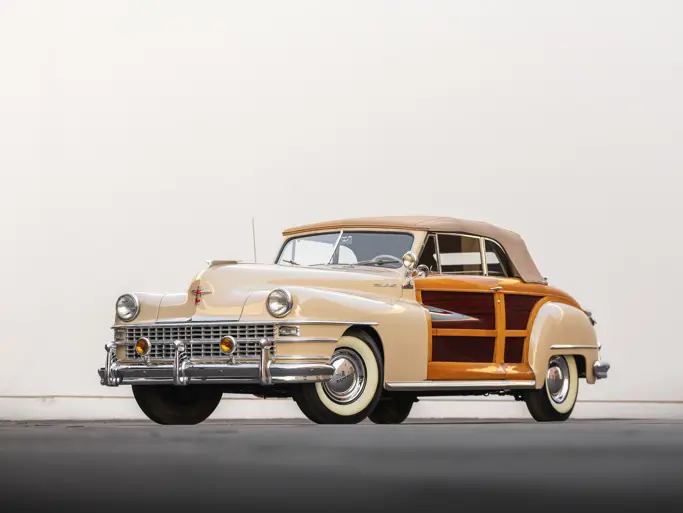United States automobile production was halted on 10 February 1942, barely two months after war had been declared on Germany and Japan. Preparations for armed conflict, however, had been in the air for months, indirectly boosting the sales of 1941 models, as the public sensed that it might be their last chance for a new car.
In May 1940, President Roosevelt chose William Knudsen of General Motors to head a new National Defense Council. Already automakers were searching for substitutes for metals likely to become scarce: zinc, nickel, and chromium. On 24 May 1941, the President declared a state of national emergency. Shortly thereafter, the nine auto manufacturers made an agreement to reduce 1942 production by 20 percent from projected schedules. Later, the reduction rose to 50 percent, and GM announced there would be no new models for 1943.
On 24 October, the War Production Board issued Passenger Car Limitation Order L-2b, which decreed that from 16 December, bright trim could be used only on bumpers and bumper guards. This order was modified so that materials already in stock could be used if painted, resulting in the so-called “blackout trim” on some models. Finally, the new quotas for February 1942 were revoked, and manufacturers were given until 11 February to fill their January allotments. Ford and Pontiac were the last to do so, on the 10th.
Reportedly used by a New Hampshire resort, this 1942 Ford Station Wagon was part of the Dingman Collection from 2003 to 2012. Upon acquisition, it was sent to Lowrey Auto Restoration for a full renewal to Mr. Dingman’s exacting standards. Invoices from Mr. Dingman’s ownership, which is included on file, documents the restoration expenditure alone at over $200,000. The current owner acquired it at the 2012 Dingman sale and has kept it in tip-top shape ever since, driving it sparingly. It has recently been returned to Lowrey’s shop for full detailing.
The wood is original to the car, and, while it exhibits some staining at the joints and repair of certain sections, the overall effect is very nice. The metal components, which have correct contours, are painted black. The finish shows no significant flaws. Correct brown grained artificial leather is used on the roof, and the seating is upholstered in brown leather. Black rubber mats are used on the floors. The interior is highlighted by a burl wood-grain dashboard, with exceptional plastic, which appears original. The odometer shows slightly more than 84,000 miles, believed correct. There is a hot water heater and dual door-hinge rear-view mirrors, but no other accessories.
The war-shortened 1942 model year curtailed production drastically. While wagon production had surpassed 15,000 in 1941, slightly more than half of them Super DeLuxe models, the following year just 5,483 Super DeLuxe wagons left the production line, and scant 567 DeLuxe versions. As a result, any surviving 1942 Ford station wagon is rare. This, certainly, is one of the best.


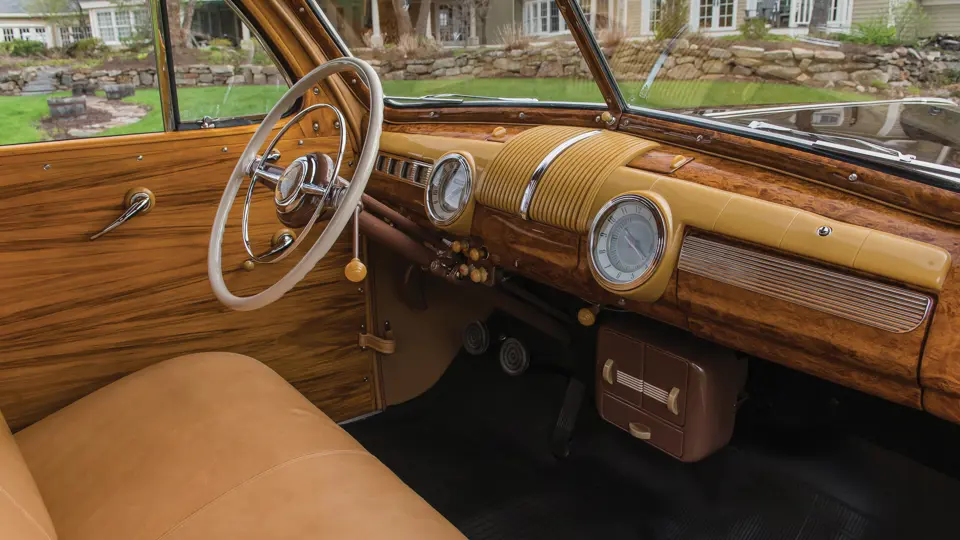

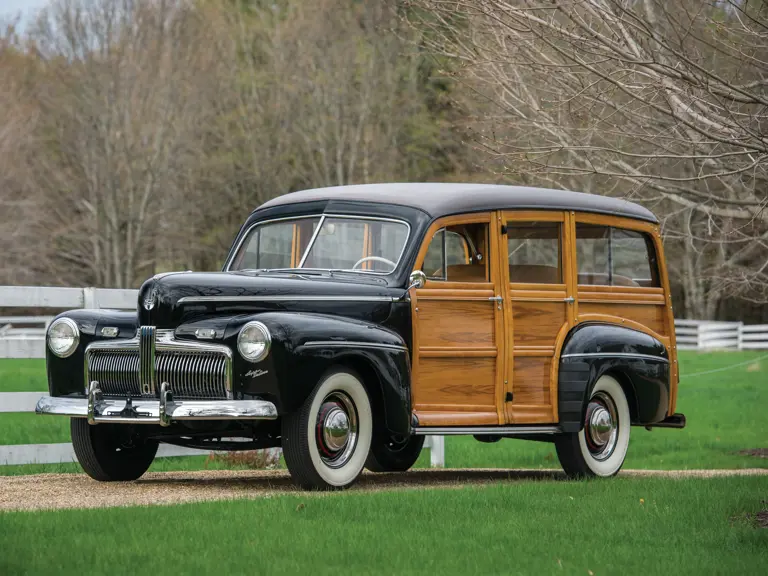
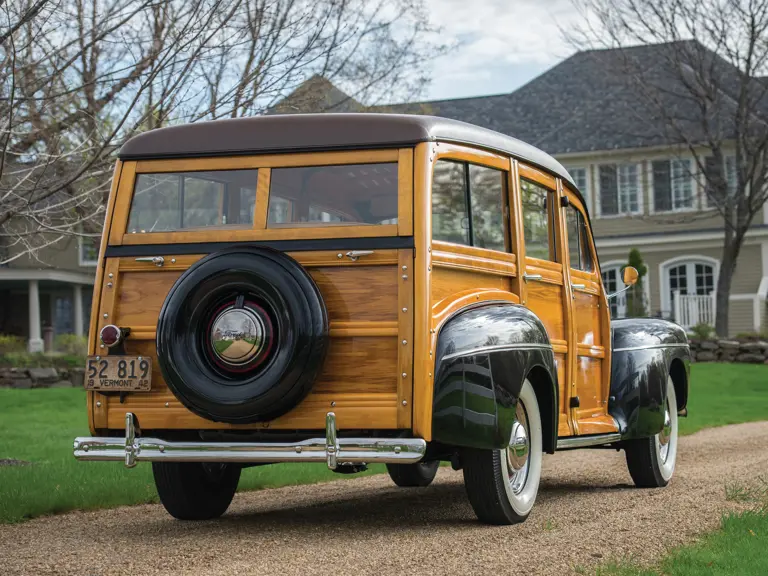
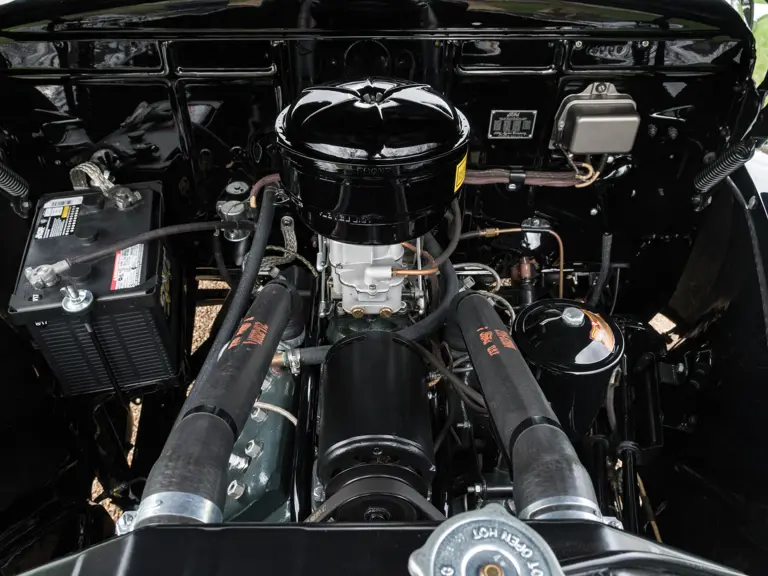
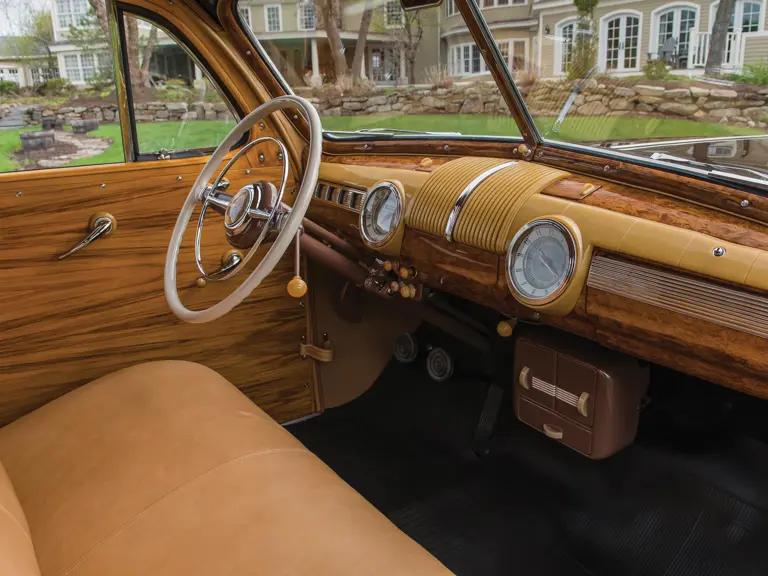
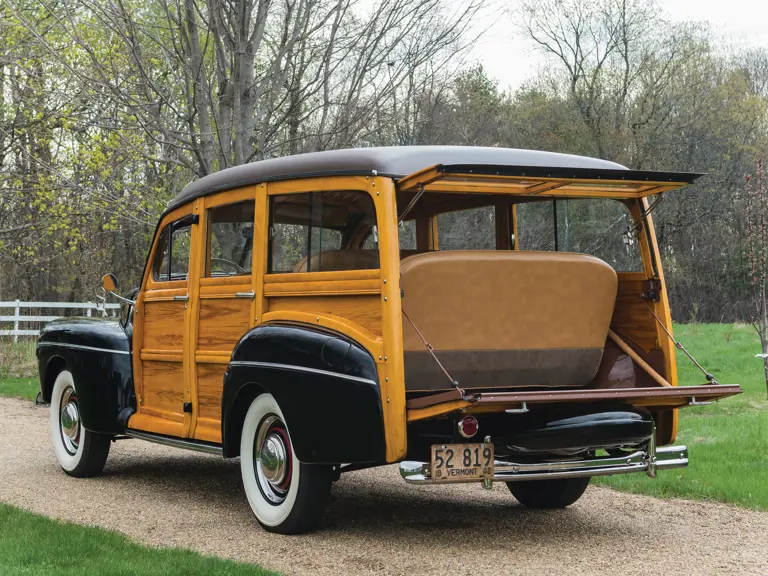
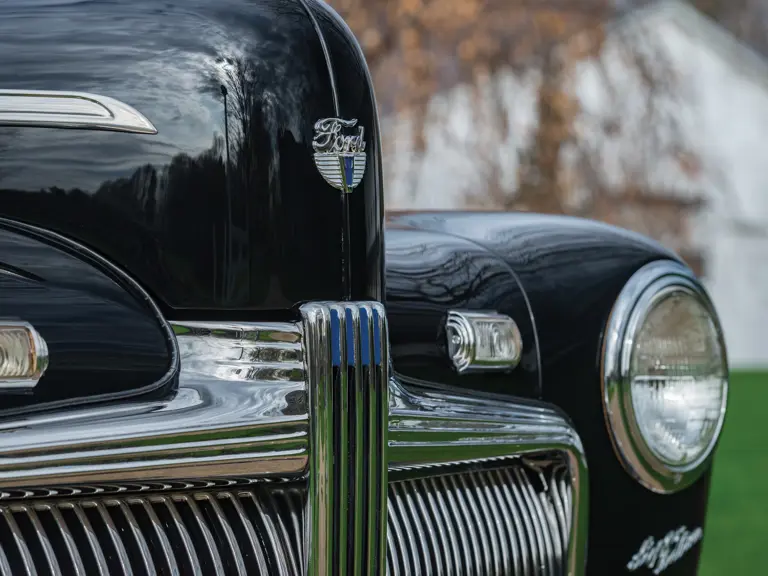

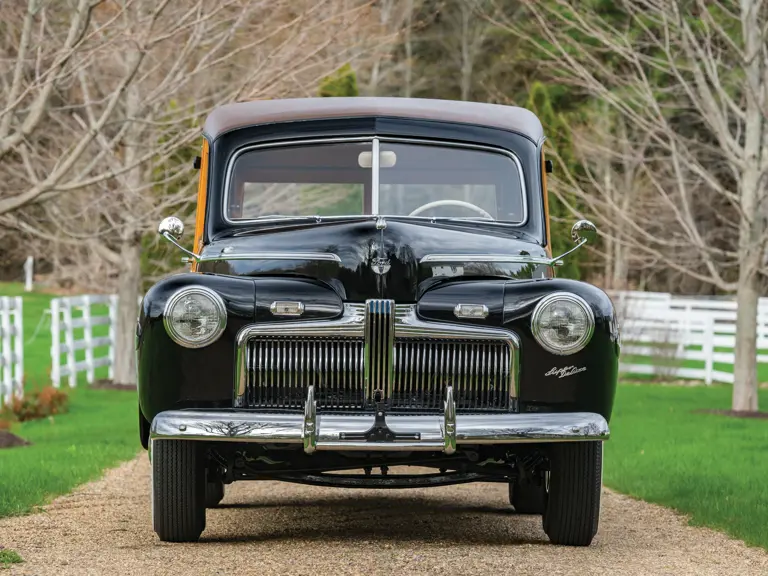

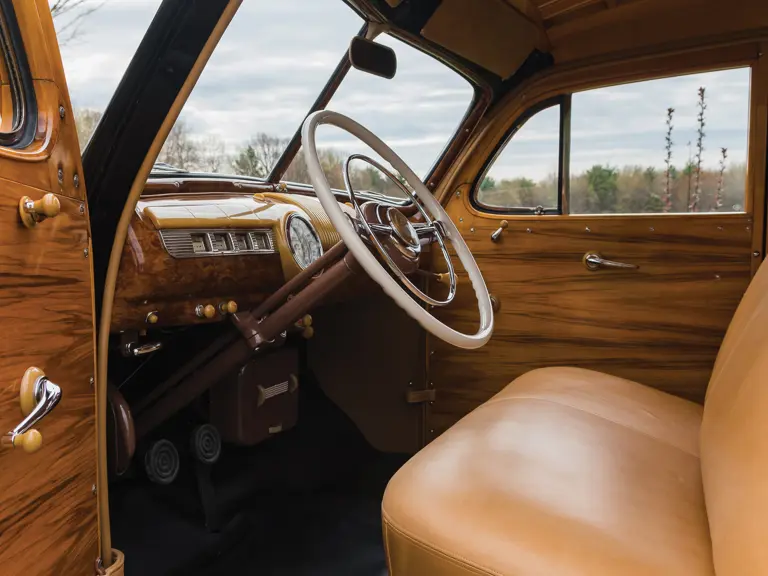
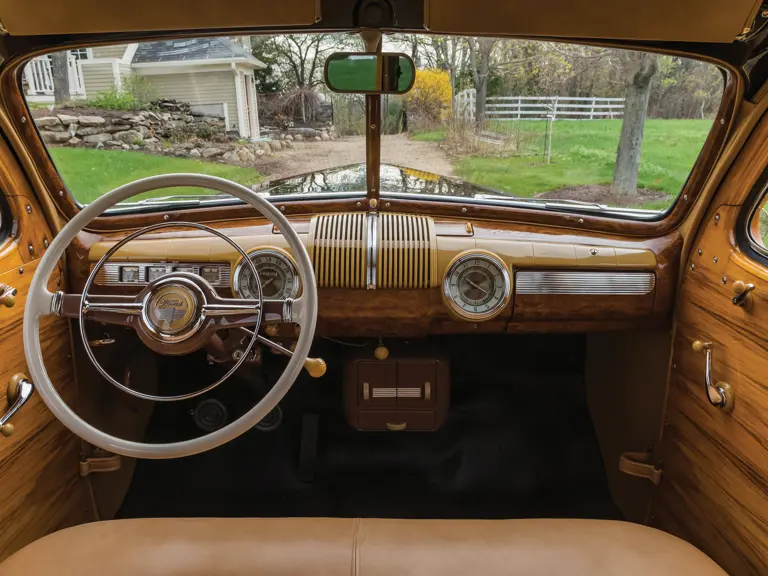


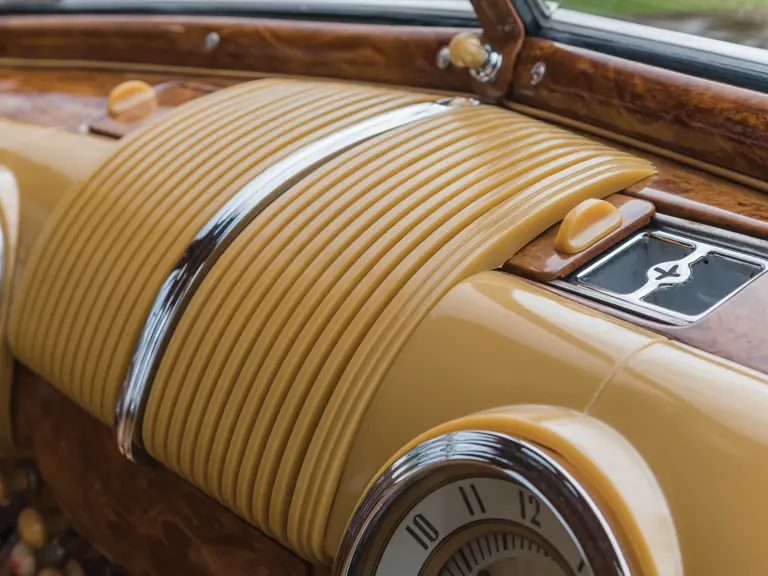

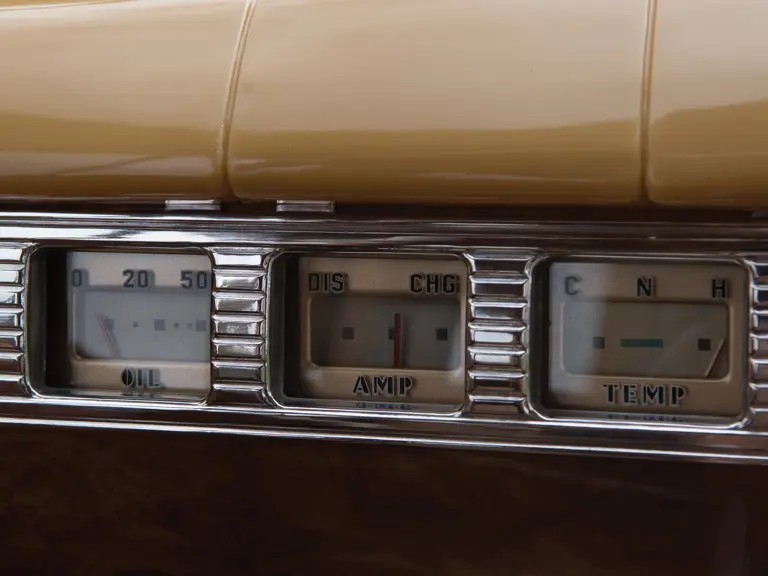
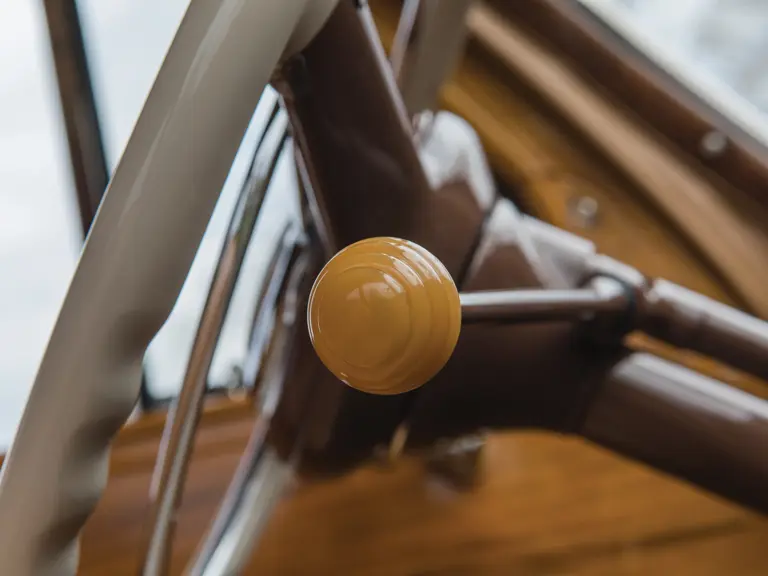
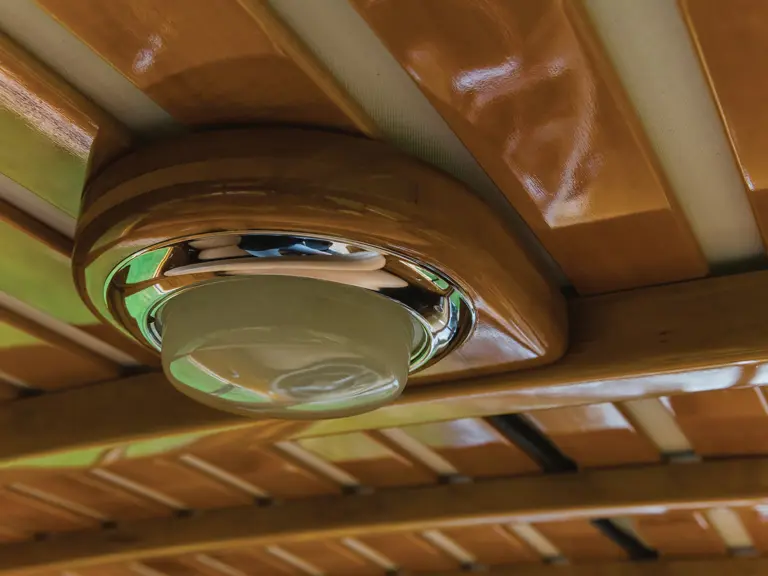
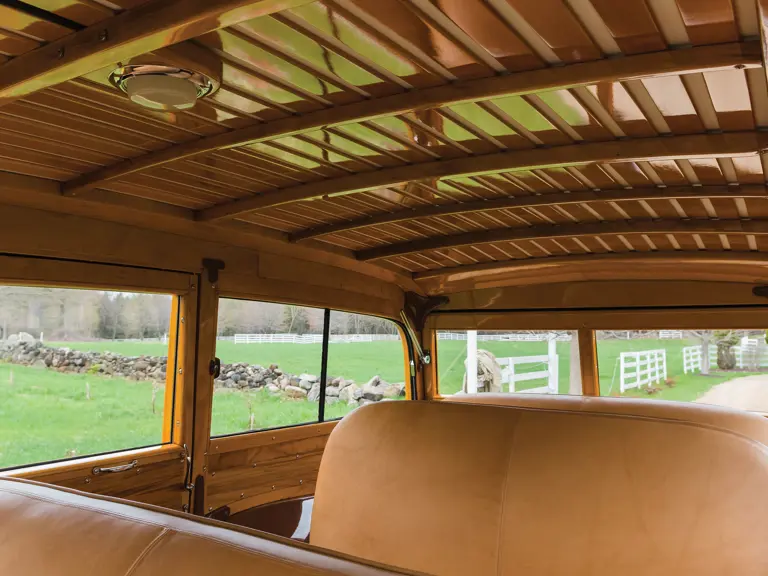
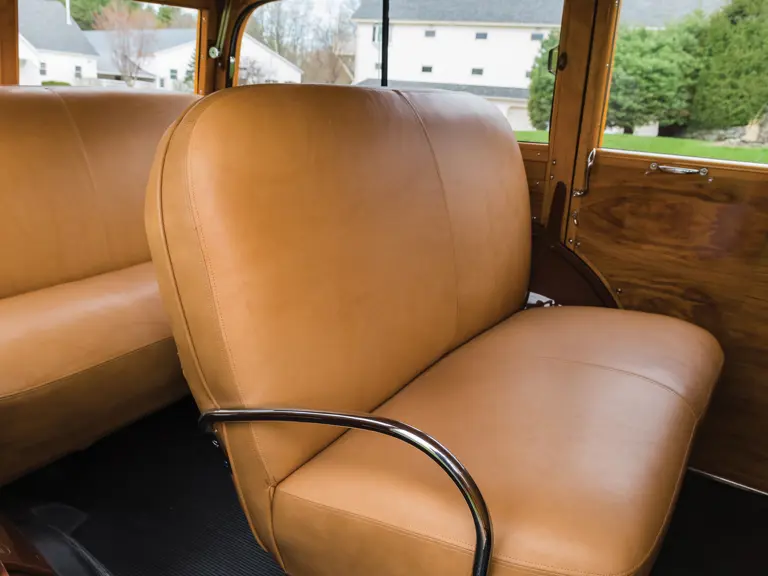
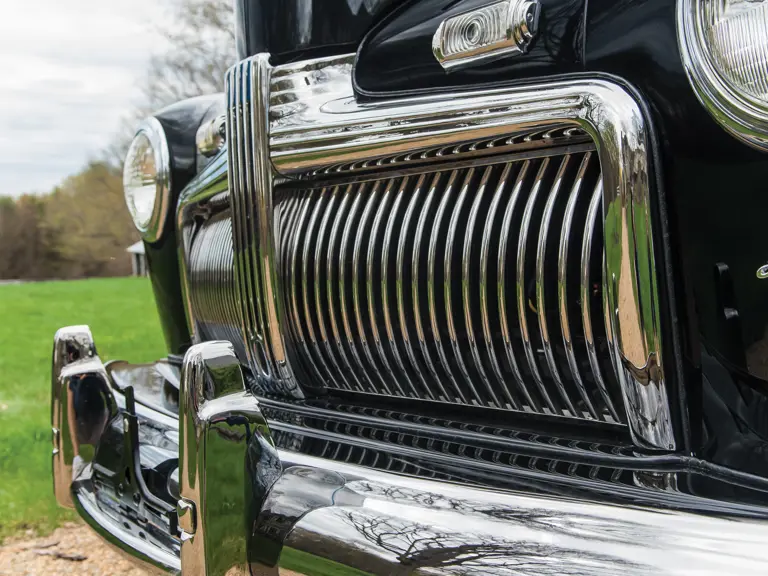
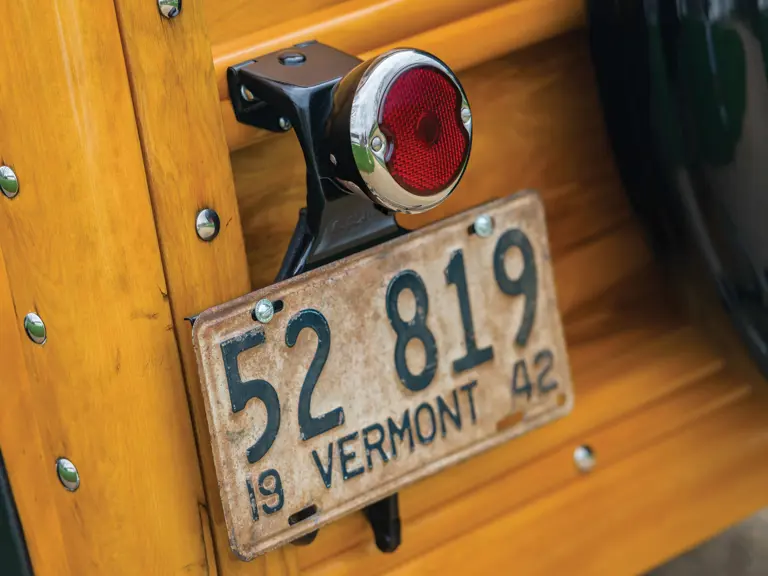

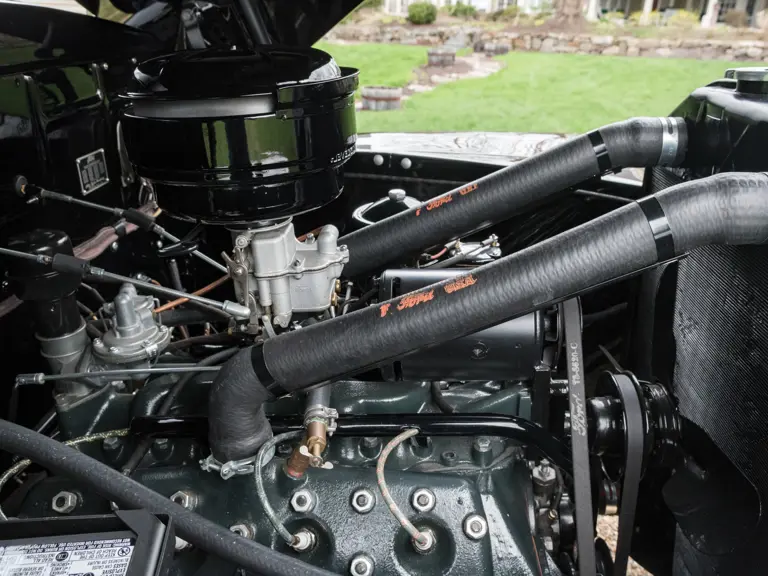
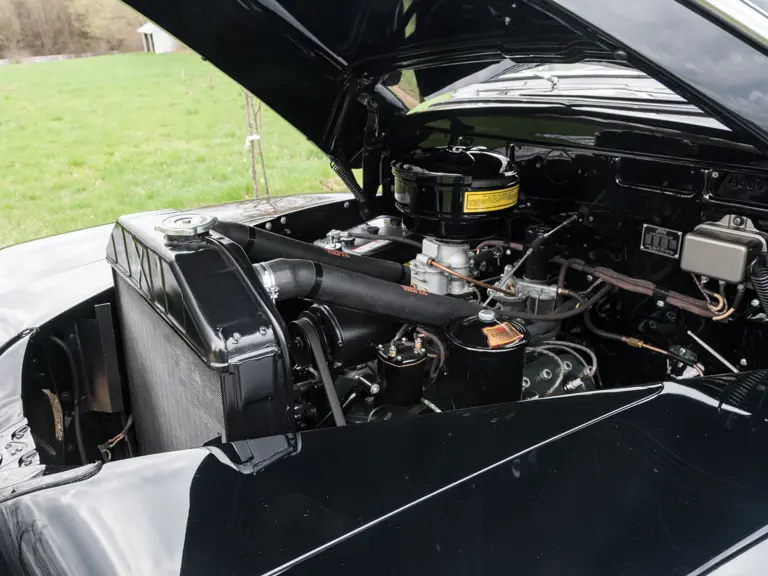
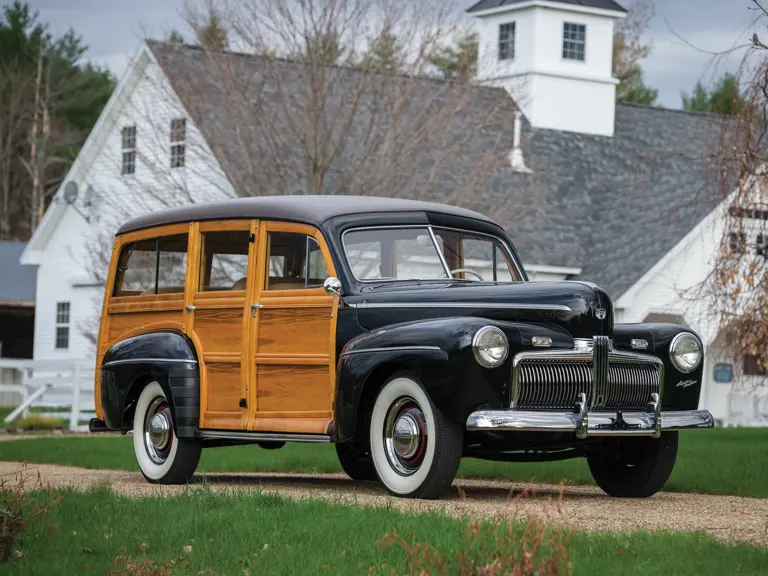
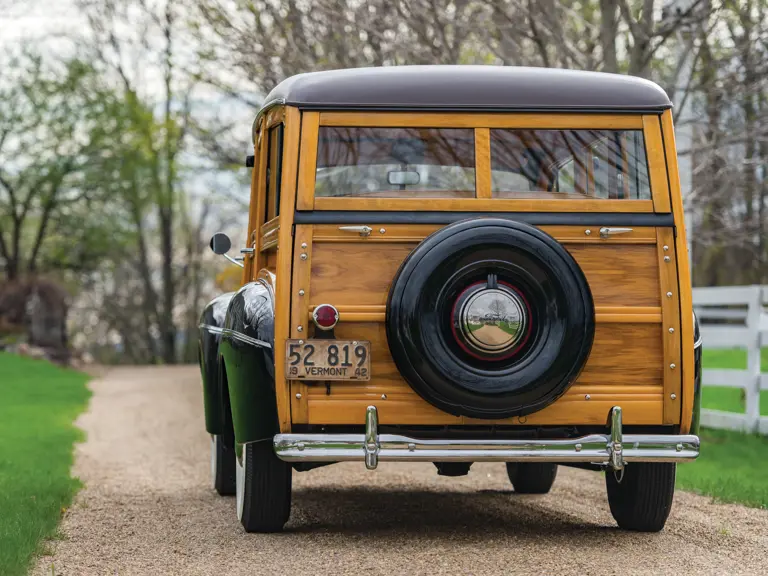
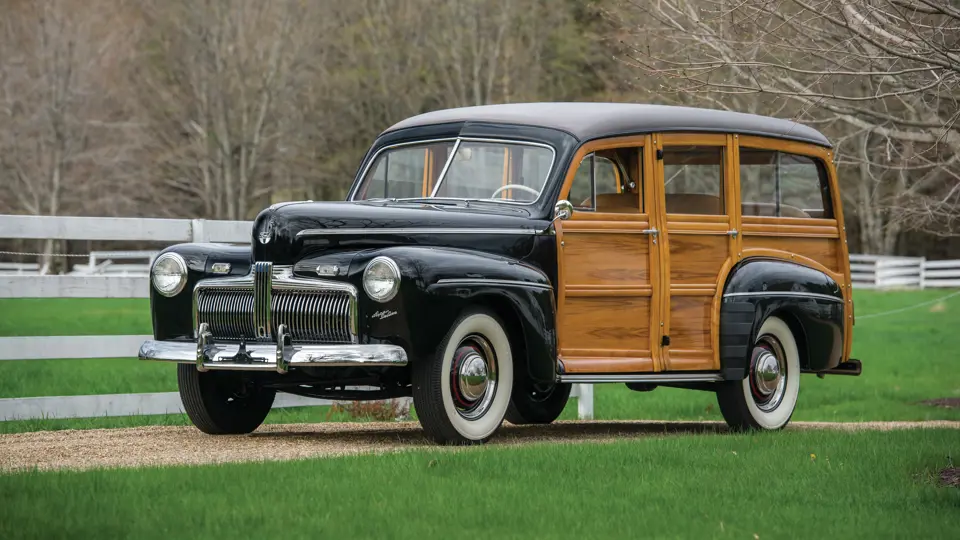
 | Hampton, New Hampshire
| Hampton, New Hampshire
